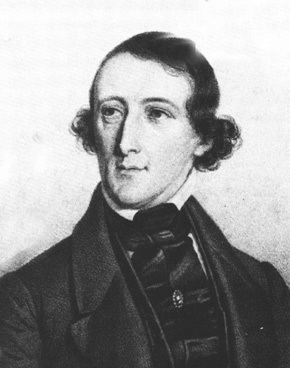Name August Bournonville Resting place Assistens Cemetery Religion Christianity Education Conservatoire de Paris | Known for Bournonville School Parents Antoine Bournonville Nationality Danish Role Ballet choreographer | |
 | ||
Full Name Antoine Auguste Bournonville Occupation Ballet MasterChoreographer Children VilhelmineMathildeEdmondThereseCharlotteAugusta Spouse Helene Frederikke Haakansson (m. 1830) Books My Theatre Life, La Sylphide - A Ballet Libretto of 1836 | ||
Ballet evolved august bournonville 1805 1879
August Bournonville (21 August 1805 – 30 November 1879) was a Danish ballet master and choreographer. He was the son of Antoine Bournonville, a dancer and choreographer trained under the French choreographer, Jean Georges Noverre, and the nephew of Julie Alix de la Fay, née Bournonville, of the Royal Swedish Ballet.
Contents
- Ballet evolved august bournonville 1805 1879
- Napoli ballet by august bournonville and lloyd riggins
- Early years
- Family
- Paris
- Death
- Legacy
- References

Bournonville was born in Copenhagen, Denmark, where his father had settled. He trained with his father Antoine Bournonville as well he studied under the Italian choreographer Vincenzo Galeotti at the Royal Danish Ballet, Copenhagen, and in Paris, France, under French dancer Auguste Vestris. He initiated a unique style in ballet known as the Bournonville School.

Following studies in Paris as a young man, Bournonville became solo dancer at the Royal Ballet in Copenhagen. From 1830 to 1848 he was choreographer for the Royal Danish Ballet, for which he created more than 50 ballets admired for their exuberance, lightness and beauty. He created a style which, although influenced from the Paris ballet, is entirely his own. As a choreographer, he created a number of ballets with varied settings that range from Denmark to Italy, Russia to South America. A limited number of these works have survived.
Bournonville's work became known outside Denmark only after World War II. Since 1950, The Royal Ballet has several times made prolonged tours abroad, not the least to the United States, where they have performed his ballets.
Bournonville's best-known ballets are La Sylphide (1836), Napoli (1842), Le Conservatoire (1849), The Kermesse in Bruges (1851) and A Folk Tale (1854).
Napoli ballet by august bournonville and lloyd riggins
Early years
Born in Copenhagen 21 August 1805, Bournonville was the son of the French ballet master Antoine Bournonville, who had settled in Denmark, and Lovisa Sundberg, a Swede. At the age of eight, he entered the Royal Ballet School at the Court Theatre in Christiansborg Palace under the tutelage of his father and Vincenzo Galeotti, ballet master and principal choreographer of the Royal Danish Ballet from 1775 to 1816.
On 2 October 1813, Bournonville made his first stage appearance in a small part as the son of a Viking king in Galeotti's Lagertha, the first ballet on a Nordic theme. Less than a year later, he received his first personal applause for dancing a Hungarian solo at the Court Theatre. In addition to dance, Bournonville was a voracious reader, learned French at home, played the violin, sang in a boy soprano voice, and studied declamation with the actors Michael Rosing, Lindgreen, and Frydensdahl. His many talents were brought together on the Queen's birthday, 29 October 1817, when as a twelve-year-old he played the role of Adonia to royal acclaim in a music-drama, Solomon's Judgment and sang a romance, "The Mother with Her Drooping Wings".
Family
Bournonville had five siblings. He was the only one in out of the children who showed any interest in dancing. He married Helena Fredrika Håkansson on 23 June 1830. They had seven children, including Charlotte who became an opera singer and actress. Both sons died as toddlers.
Paris
In 1820, Antoine Bournonville received a grant from his sovereign to briefly study ballet in Paris. Bournonville accompanied his father to Paris, and, although he studied solely with his father during the Paris sojourn, he was exposed to the latest trends in ballet and watched the illustrious teachers, Gardel and Vestris in action. Upon returning to Denmark, Bournonville became a member of the Royal Theatre, dancing in repertory that was less interesting to him after his exposure to Paris ballet.
In the spring of 1824, Bournonville returned to Paris for final studies and examination preparations at the Paris Opera. The expected fifteen-month sojourn would stretch to five years, during which time Danish ballet would approach near-disastrous decline. In Paris, Bournonville met his father's old friend, Louis Nivelon, in Paris who provided him with friendship, meals, and entree into society. Bournonville hoped the master Gardel would accept him but Gardel's studio was no longer in existence and he was directed to Auguste Vestris for training in his weakest areas — "balance, pirouettes, and arms." Vestris accepted Bournonville. Bournonville wrote his father:
Bournonville danced from 1820 to 1828 with the noted dancer Marie Taglioni and the Paris Opera Ballet.
Death
Bournonville stopped teaching adult classes in the spring of 1877. On returning from church on 30 November 1879, he was stricken and taken to a hospital. Bournonville was interred near Asminderød Church near Fredensborg.
Legacy
Bournonville's work remains an important link with earlier traditions. He resisted many of the excesses of the romantic era ballets in his work. He is noted for his egalitarian choreography, which gave equal emphasis to both male and female roles, at a time when European ballet emphasized the ballerina. Many of his contemporaries explored the extremes of human emotion, while Bournonville, using enthusiastic footwork and fluid phrases in his work, portrayed a more balanced human nature.
